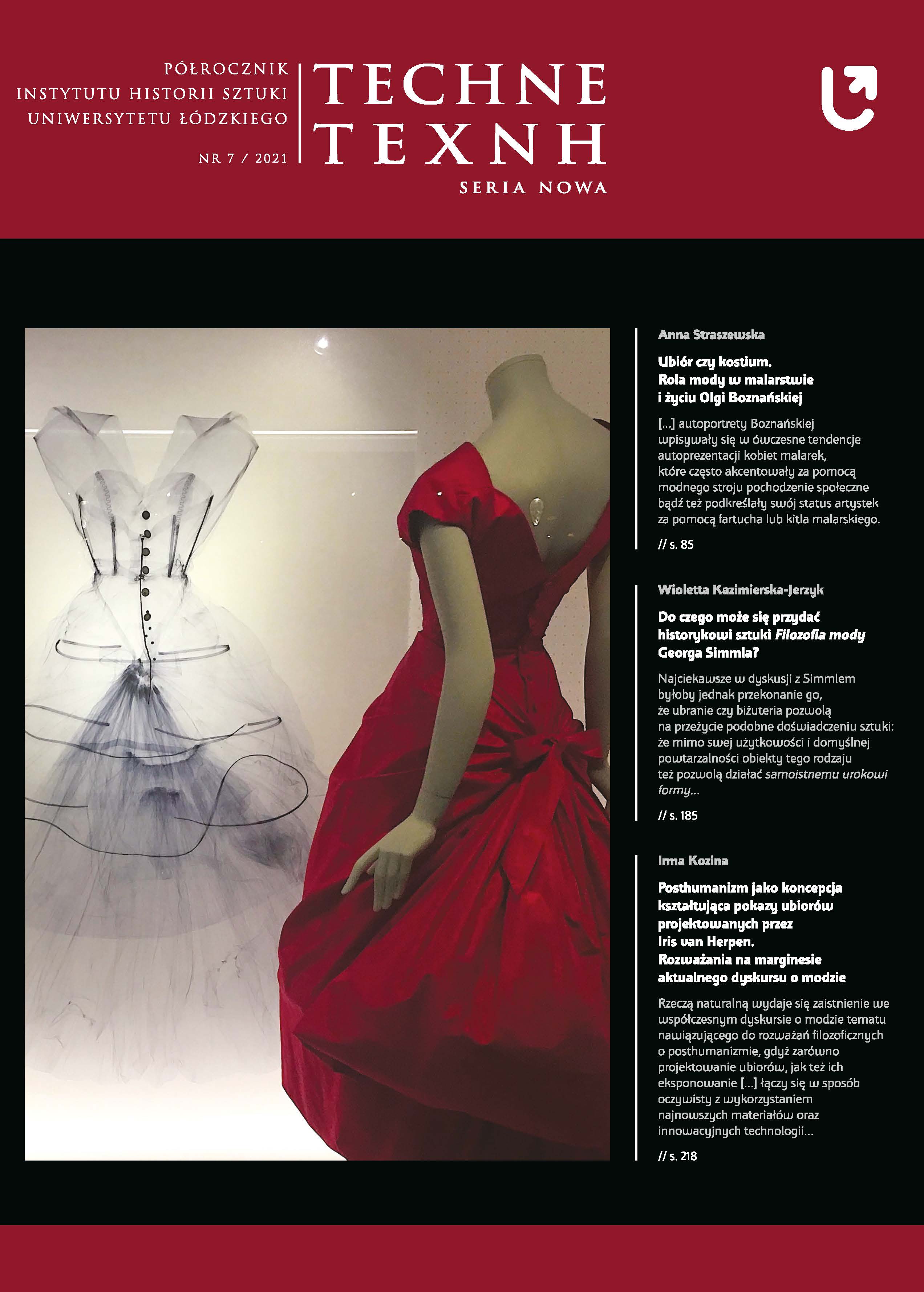Wpływ przemysłu filmowego Hollywood na wizerunek kobiet w latach 30. XX wieku
Hollywood film industry’s influence on women’s image in the 1930s
Author(s): Adam DrozdowskiSubject(s): Fine Arts / Performing Arts
Published by: Wydawnictwo Uniwersytetu Łódzkiego
Keywords: Modernism; intewar fashion; Hollywood; emancipation; glamour
Summary/Abstract: The 1930s were a period of the golden age of Hollywood and the furtheremancipation of women. The film industry played an important role in the development of new possibilities of creating one’s own image, which not only promoted, but above all shaped and exploited them. The Hollywood movie industry has joined forces with manufacturers of ready-made clothing and cosmetics to take advantage of new mass production opportunities. The market was flooded by a wave of clothes and products inspired by the film creations of stars or their image. In order to steer consumers’ choices, texts that helped women define their type of beauty were published in the film and women’s press. The images of movie stars, who often advertised various brands in the discussed period, were typified in a similar way. The main ambassadors of saidchange were silver screen stars such as Joan Crawford and Bette Davis. Their photos adorned the covers of magazines around the world, and journalists reported on their beauty and original lifestyle. The film industry has developed a specific image of a confident woman, wearing spectacular outfits. However, it was not the only model proposed in the 1930s. In the era of modernism, Parisian tailors were inspired by the achievements of antiquity to make their clients look like ancient deities. The woman, according to Vionnet or Chanel, was refined and cool. The aesthetics offered by the most famous French fashion houses, however, was sublime, it appealed to women not only of means, but also with a sophisticated taste. Thus, the described trends collided: the eroticized, kitschy image of Hollywood stars, clashed with the distinguished style of a Parisian high society lady. Despite significant differences, in the 1930s an aesthetic was developed that was a synthesis of both paths. The glamor category drew from both images equally. This term refers to a woman who is mysterious and haughty on the one hand, full of cool elegance, associated with power and deity, but what she hides is female sensuality and something provocative.
Journal: TECHNE. Seria Nowa
- Issue Year: 2021
- Issue No: 7
- Page Range: 135-155
- Page Count: 21
- Language: Polish

